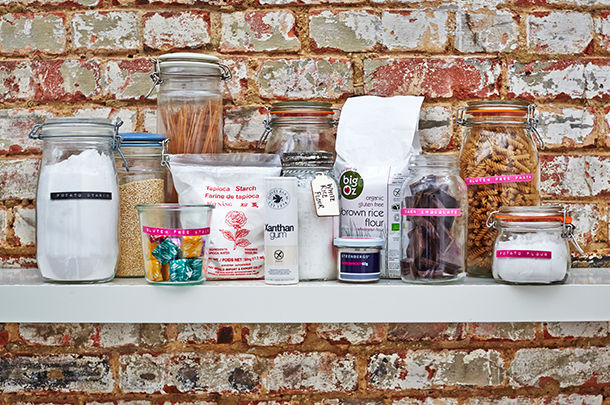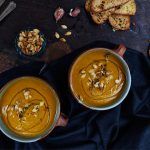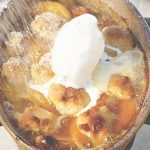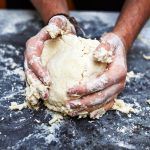Imagine needing to make the switch to the gluten-free lifestyle because you’ve been diagnosed with coeliac disease, or, like me, because you have other health issues for which a gluten-free diet would be helpful.
Believe me, panic sets in. A long list of foods you love is suddenly out: pizza, pasta, French toast, sandwiches – what will you do? Don’t panic! Instead of seeing the limitations on your diet as a problem, see it as a challenge to your creativity. The door has opened to a world of gastronomic discovery.
When cravings for familiar comfort foods come a-knocking, with the right, safe ingredients in your cupboard, you can answer without risking the consequences of indulging the gluten-y foods that make you sick.
Here are 12 must-have ingredients to keep stocked in your gluten-free kitchen, and a recipe for a quick flour that you can also use for anything from loaves to waffles.
Breakfast
Oats are a great way to get some grain in you, but make sure it’s certified gluten-free to avoid cross contamination. Buckwheat and amaranth are all great as part of breakfast too – and polenta is heavenly topped with a poached egg. Swoon!
Lunch
If sandwiches are your jam, try different gluten-free breads on the market until you find one you like. Where I’m from in the US, the best one available is from Canyon Bakehouse (identical taste and texture to packaged sandwich bread).
Dinner
Most Asian food is gluten-free friendly, so I have lots of ingredients for that part of the world, just be sure to buy gluten-free soy sauce.
Mexican food is easily adaptable, too – corn flour (sometimes sold as masa flour) requires only water to have fresh tortillas in minutes, and brown rice flour tortillas are a great substitute if you want a wrap or quesadilla, instead of tacos.
Almond meal (ground almonds with skin) and/or almond flour (without skin) can be used in place of breadcrumbs for meatloaf and meatballs, scalloped potatoes, chicken cutlets and more. They add a slight nutty flavor without being too overpowering, especially if you season them before using.
For pasta that isn’t homemade, experiment with brands on the market until you find the one you like best. Here’s a pro tip though: cook the pasta al dente (which means for less time than the package directions say, and so that it still has a “bite”) to avoid the too-mushy snag that so often happens with gluten-free pasta brands. I’ve tried every brand on the market, and Jovial Foods makes the best by a long shot. They’re available online, and ship only to the U.S. (but do email them to inquire about international shipping).
Side dishes
Rice (white, brown, red, wild, & arborio), polenta, grits, and quinoa are all gluten free and great for sides, but more obvious examples include sweet potatoes, white potatoes, yams and every vegetable imaginable.
Snacks
Whole popcorn kernels, gluten-free crackers, corn tortilla chips and potato chips (crisps to the Brits) are all gluten-free snacks. The former is best because it’s a wholegrain and isn’t fried.
Last but not least, sleuth around your area to see if there are speciality stores that carry gluten-free artisanal goodies (croutons, flatbreads or crostini toasts). Finding a local company that makes your gluten-free life that much more dee-yummy-licious is worth the extra effort.
For baking
You need to keep an arsenal of gluten-free flours in your freezer. My freezer always has: brown rice flour, white rice flour, sweet white rice flour, potato flour, potato starch, tapioca flour (also known as tapioca starch), arrowroot flour (or arrowroot starch), coconut flour and almond flour.
Making your own blend will save money and give you precise textures. I’ve provided a recipe for an “all-purpose quick bread” flour blend that’s great for waffles, muffins, and pancakes to help get you started, but experiment to see what you like.
Many recipes will call for xanthan or guar gum, a product that adds bouncy texture to baked goods (in an attempt) to mimic gluten. Experiment with and without them to decide for yourself.
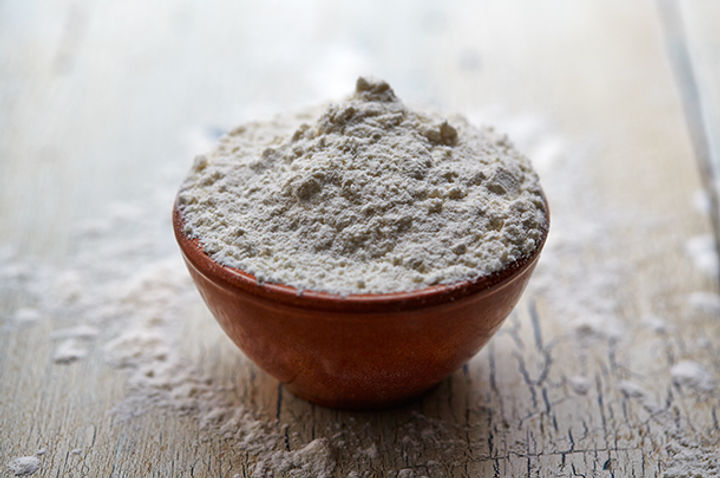
Quick all-purpose gluten-free flour blend recipe
In case you don’t have a kitchen scale to measure your flour by weight (an essential tool for baking in general, but even more important in gluten-free baking), I put the best approximation in cups below.
Ingredients:
221 grams (approx. 1.5 cups) brown rice flour
210 grams (approx 1.5 cups) white rice flour
292 grams (approx 3 cups) tapioca starch flour
315 grams (approx 3 cups) arrowroot starch flour
3 tbsp potato flour
Directions: Add flours to a large mixing bowl. Whisk to combine and store in an airtight container. It will keep up to 6 months or more if stored in the fridge or freezer.
For our top five gluten-free recipes, including amazing pizza dough, click here.
